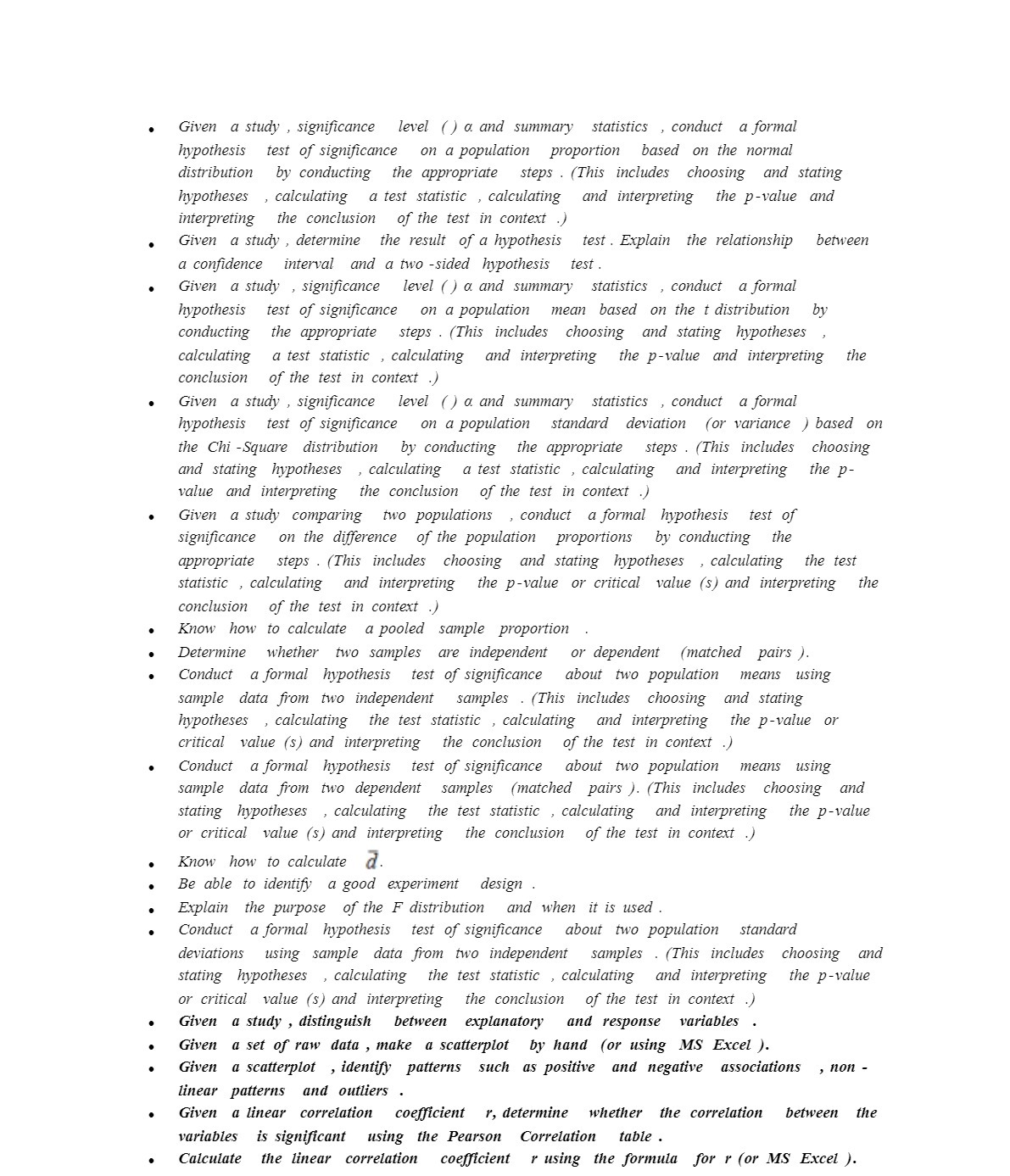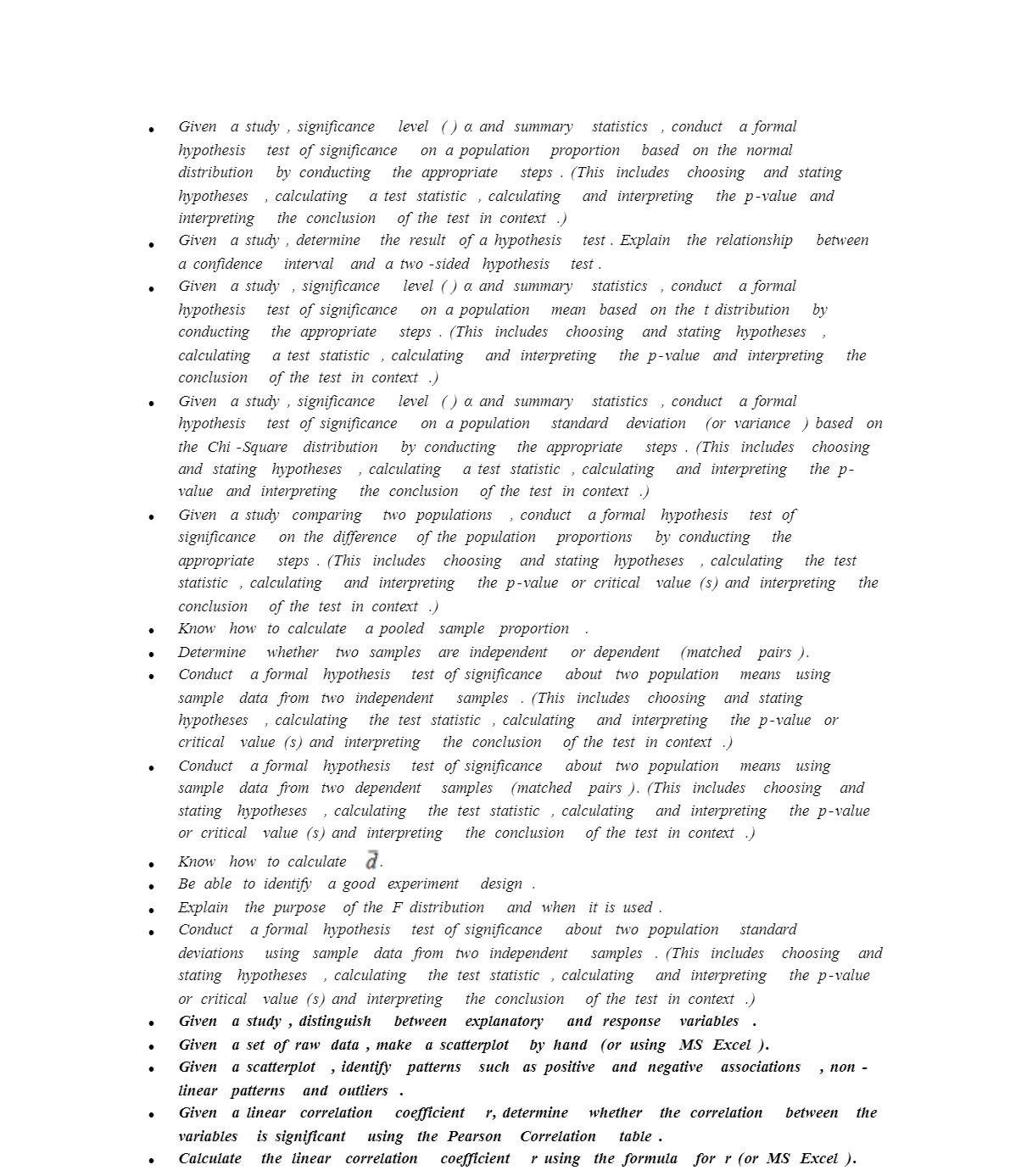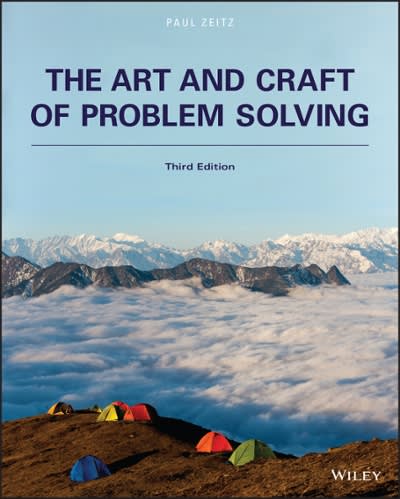
Given a study , significance level ( ) a and summary statistics , conduct a formal hypothesis test of significance on a population proportion based on the normal distribution by conducting the appropriate steps . (This includes choosing and stating hypotheses , calculating a test statistic , calculating and interpreting the p-value and interpreting the conclusion of the test in context .) Given a study , determine the result of a hypothesis test . Explain the relationship between a confidence interval and a two -sided hypothesis test . Given a study , significance level ( ) a and summary statistics , conduct a formal hypothesis test of significance on a population mean based on the t distribution by conducting the appropriate steps . (This includes choosing and stating hypotheses calculating a test statistic , calculating and interpreting the p-value and interpreting the conclusion of the test in context .) Given a study , significance level ( ) a and summary statistics , conduct a formal hypothesis test of significance on a population standard deviation ( (or variance ) based on the Chi -Square distribution by conducting the appropriate steps . (This includes choosing and stating hypotheses , calculating a test statistic , calculating and interpreting the p- value and interpreting the conclusion of the test in context . Given a study comparing two populations , conduct a formal hypothesis test of significance on the difference of the population proportions by conducting appropriate steps . (This includes choosing and stating hypotheses , calculating the test statistic , calculating and interpreting the p-value or critical value (s) and interpreting the conclusion of the test in context .) Know how to calculate a pooled sample proportion . Determine whether two samples are independent or dependent (matched pairs ). Conduct a formal hypothesis test of significance about two population means using sample data from two independent samples . (This includes choosing and stating hypotheses , calculating the test statistic , calculating and interpreting the p-value or critical value (s) and interpreting the conclusion of the test in context . Conduct a formal hypothesis test of significance about two population means using sample data from two dependent samples (matched pairs ). (This includes choosing and stating hypotheses , calculating the test statistic , calculating and interpreting the p-value or critical value (s) and interpreting the conclusion of the test in context .) Know how to calculate d. Be able to identify a good experiment design . . Explain the purpose of the F distribution and when it is used . Conduct a formal hypothesis test of significance about two population standard deviations using sample data from two independent samples . (This includes choosing and stating hypotheses , , calculating the test statistic , calculating and interpreting the p-value or critical value (s) and interpreting the conclusion of the test in context .) Given a study , distinguish between explanatory and response variables . Given a set of raw data , make a scatterplot by hand (or using MS Excel ). . . Given a scatterplot , identify patterns such as positive and negative associations , non - linear patterns and outliers Given a linear correlation coefficient r, determine whether the correlation between the variables is significant using the Pearson Correlation table . Calculate the linear correlation coefficient r using the formula for r (or MS Excel )








